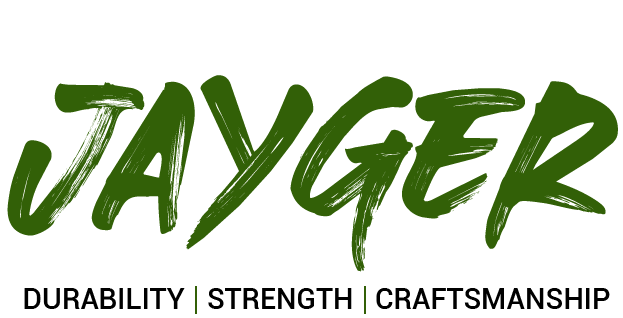Safety Precautions When Handling a Chef Cleaver
Handling a meat cleaver can be daunting, especially for those new to the world of cooking. While it is an essential tool in any kitchen, it can be dangerous if not used properly. With its sharp blade and heavy weight, a meat cleaver can cause severe injuries if mishandled. Therefore, taking proper safety precautions when using a meat cleaver is crucial. This article will discuss tips and tricks to help you safely handle a meat cleaver. Whether you’re a beginner or an experienced chef, these safety precautions will help you avoid accidents and injuries in the kitchen. So, let’s dive into some essential safety measures you must consider while handling a meat cleaver.
Anatomy of a Chef Cleaver Knife
Before we delve into the safety precautions while using a chef cleaver knife, it is essential to understand the anatomy of a meat cleaver. A meat cleaver is a large, rectangular blade typically made of Damascus steel. The blade is heavy and thick, with a sharp edge that runs along the length of the blade. The blade’s spine is thick and sturdy, allowing for forceful chopping. The handle of a meat cleaver is usually made of wood or plastic and is designed to provide a comfortable grip. The handle is also designed to absorb any shock or vibrations while chopping.
Common Injuries from Chef Cleavers
Using a meat cleaver can be hazardous if not used properly. Common injuries from chef cleavers knife include cuts, lacerations, and puncture wounds. These injuries can range from minor to severe, depending on the impact force and location of the damage. Dents and scratches can occur when the blade is mishandled, or the cutting surface is unstable. Puncture wounds can occur when the blade slips and penetrates the skin. Injuries to the fingers and hands are the most common since they are closest to the blade.
Precautions Before Using a Meat Cleaver
Before using a meat cleaver, it is essential to take some basic precautions to ensure your safety. Firstly, ensure that the chef cleaver knife is clean and dry. Any moisture on the blade or handle can cause it to slip and lead to injuries. Secondly, ensure that the cutting surface is stable and secure. The cutting surface should be made of a material that can withstand the force of the blade, such as wood or plastic. Avoid using glass or ceramic cutting surfaces, which can shatter and cause injuries. Thirdly, keep children and pets away from the workspace using a meat cleaver. They may accidentally bump into you while using the chopper, leading to accidents and injuries.
Understanding the Risks: Potential Hazards of Using a Meat Cleaver
While a meat cleaver can be a valuable tool in the kitchen, it’s essential to understand the potential hazards and take necessary safety precautions. One of the most significant risks is accidentally cutting yourself or others while using the cleaver. To avoid this:
- Always keep your fingers and other body parts away from the blade, and use a cutting board with a non-slip surface.
- Keep your cleaver sharp to prevent it from slipping and causing injury.
- Always store your chopper safely and securely, away from children and other potential hazards.
Essential Safety Gear: Protective Equipment for Handling a Meat Cleaver
When handling a meat cleaver, it’s essential to prioritize safety and protect yourself from potential hazards. One of the most important pieces of protective equipment is a cut-resistant glove, which can help prevent accidental cuts and injuries. Additionally, wearing a sturdy apron can protect your clothing from stains and potential scratches. Finally, consider wearing slip-resistant shoes to avoid slips and falls while working in the kitchen. By taking these safety precautions, you can ensure that you stay safe while using a meat cleaver in the kitchen.
Proper Grip and Handling Techniques to Minimise Accidents
When handling a meat cleaver, it’s essential to use proper grip and handling techniques to minimize the risk of accidents. Always grip the handle firmly with your dominant hand, and use your other hand to guide the blade as you chop. Keep your fingers curled under and away from the edge to avoid accidental cuts. Additionally, use a cutting board with a non-slip surface to prevent the cleaver from slipping while in use. By following these techniques, you can ensure that you handle a meat cleaver safely and effectively.
Safe Cutting Surfaces and Workspaces for Meat Cleaver Use
When using a meat cleaver, having a safe cutting surface and workspace is crucial to prevent accidents. Choose a sturdy cutting board with a non-slip surface to prevent the chopper from slipping while in use. Additionally, ensure your workspace is well-lit and clutter-free to avoid any potential hazards. Finally, always keep your fingers and other body parts away from the blade while using the cleaver, and never leave it unattended on a surface where it could be knocked over or cause harm. By following these safety precautions, you can ensure that you use a meat cleaver safely and effectively.
Preventing Injuries: Common Mistakes to Avoid When Using a Meat Cleaver
When using a meat cleaver, taking certain precautions to prevent injuries is essential. One common mistake is using a dull or damaged cleaver, which can slip and cause accidents. Always ensure your cleaver is sharp and in good condition before using it. Another mistake is using the wrong technique, such as chopping with too much force or using a sawing motion.
This can cause the cleaver to slip or bounce, potentially causing injury. Instead, use a smooth, controlled chopping motion and let the weight of the cleaver do the work. Finally, never try to catch a falling chopper or reach for it while it’s in action. Always let it fall to the ground and then pick it up carefully. You can use a meat cleaver safely and effectively by avoiding these common mistakes.
